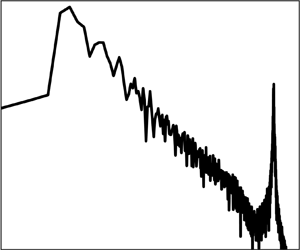Article contents
Upscale transfer of waves in one-dimensional rotating shallow water
Published online by Cambridge University Press: 14 April 2023
Abstract

We study the inverse flux of waves in one of the simplest geophysical fluid dynamics models: one-dimensional rotating shallow water equations. Based on direct numerical integration of the governing equations, we find that waves injected at small scales get transferred upscale predominantly via resonant quartic interactions between wave modes. The waves’ upscale transfer is non-local and involves turbulent transfer between disparate scales of the flow. Our analysis reveals that the upscale transfer of waves is extremely intermittent and is a result of localized-in-time bursts in wave action flux. These intermittent events of flux bursts lead to shallower waves’ spectrum and relatively higher amplitude wave fields in physical space. On examining statistics of the flow fields, we find that low-energy high wavenumbers more or less comply with the assumptions used in wave turbulence theory, such as uniformly distributed wave phases and the Gaussian distribution of fields, while non-uniform distribution of wave phases and non-Gaussian statistics dominate at large scales or low wavenumbers that contain a major share of the flow energy. Our findings point out that the one-dimensional rotating shallow water equations, despite being a simple geophysical fluid dynamic model, harbour complex and intricate features associated with the upscale transfer of waves that have not been recognized in the past.
- Type
- JFM Papers
- Information
- Copyright
- © The Author(s), 2023. Published by Cambridge University Press
References
- 4
- Cited by



